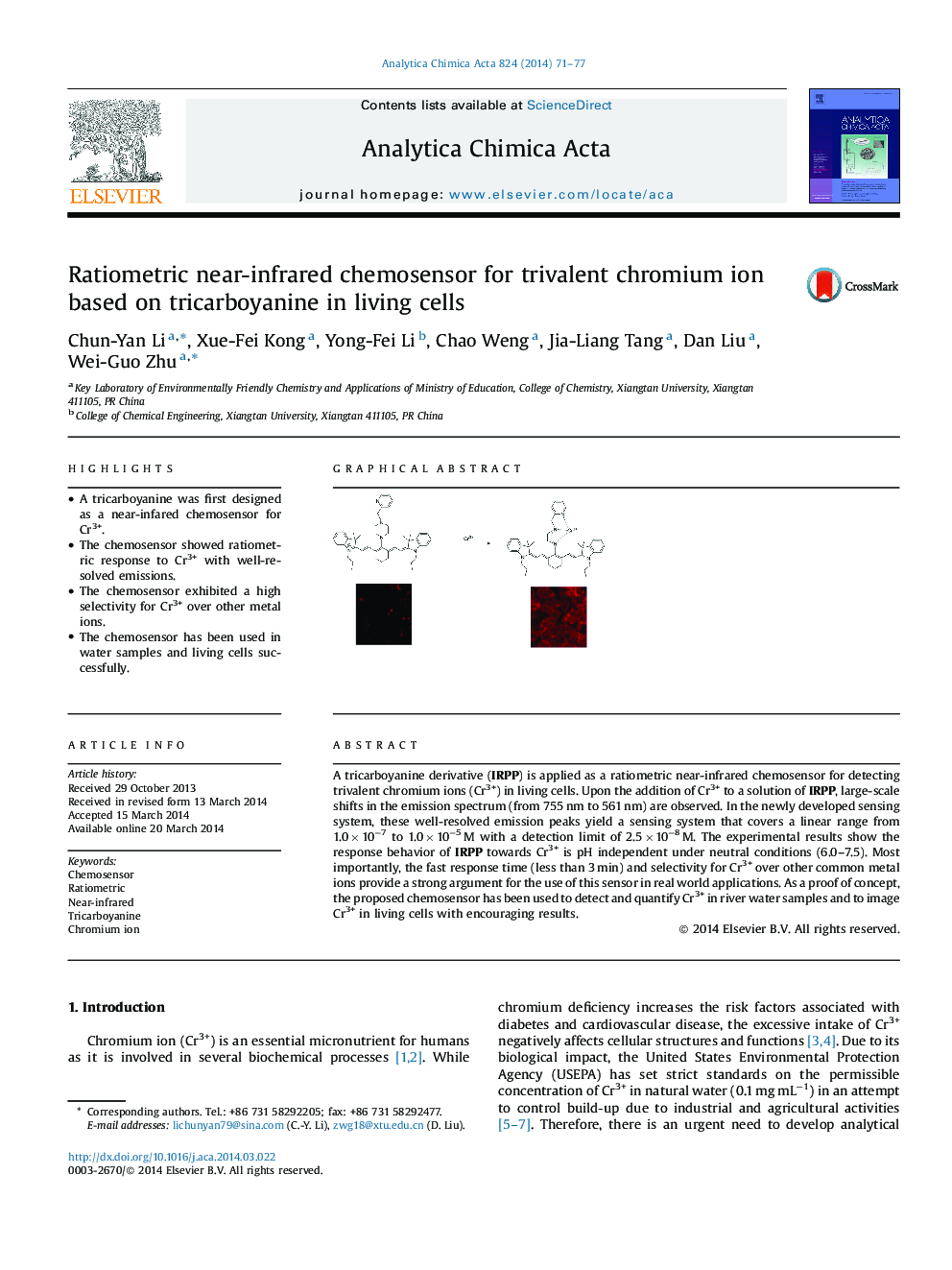| Article ID | Journal | Published Year | Pages | File Type |
|---|---|---|---|---|
| 1164120 | Analytica Chimica Acta | 2014 | 7 Pages |
•A tricarboyanine was first designed as a near-infared chemosensor for Cr3+.•The chemosensor showed ratiometric response to Cr3+ with well-resolved emissions.•The chemosensor exhibited a high selectivity for Cr3+ over other metal ions.•The chemosensor has been used in water samples and living cells successfully.
A tricarboyanine derivative (IRPP) is applied as a ratiometric near-infrared chemosensor for detecting trivalent chromium ions (Cr3+) in living cells. Upon the addition of Cr3+ to a solution of IRPP, large-scale shifts in the emission spectrum (from 755 nm to 561 nm) are observed. In the newly developed sensing system, these well-resolved emission peaks yield a sensing system that covers a linear range from 1.0 × 10−7 to 1.0 × 10−5 M with a detection limit of 2.5 × 10−8 M. The experimental results show the response behavior of IRPP towards Cr3+ is pH independent under neutral conditions (6.0–7.5). Most importantly, the fast response time (less than 3 min) and selectivity for Cr3+ over other common metal ions provide a strong argument for the use of this sensor in real world applications. As a proof of concept, the proposed chemosensor has been used to detect and quantify Cr3+ in river water samples and to image Cr3+ in living cells with encouraging results.
Graphical abstractFigure optionsDownload full-size imageDownload as PowerPoint slide
